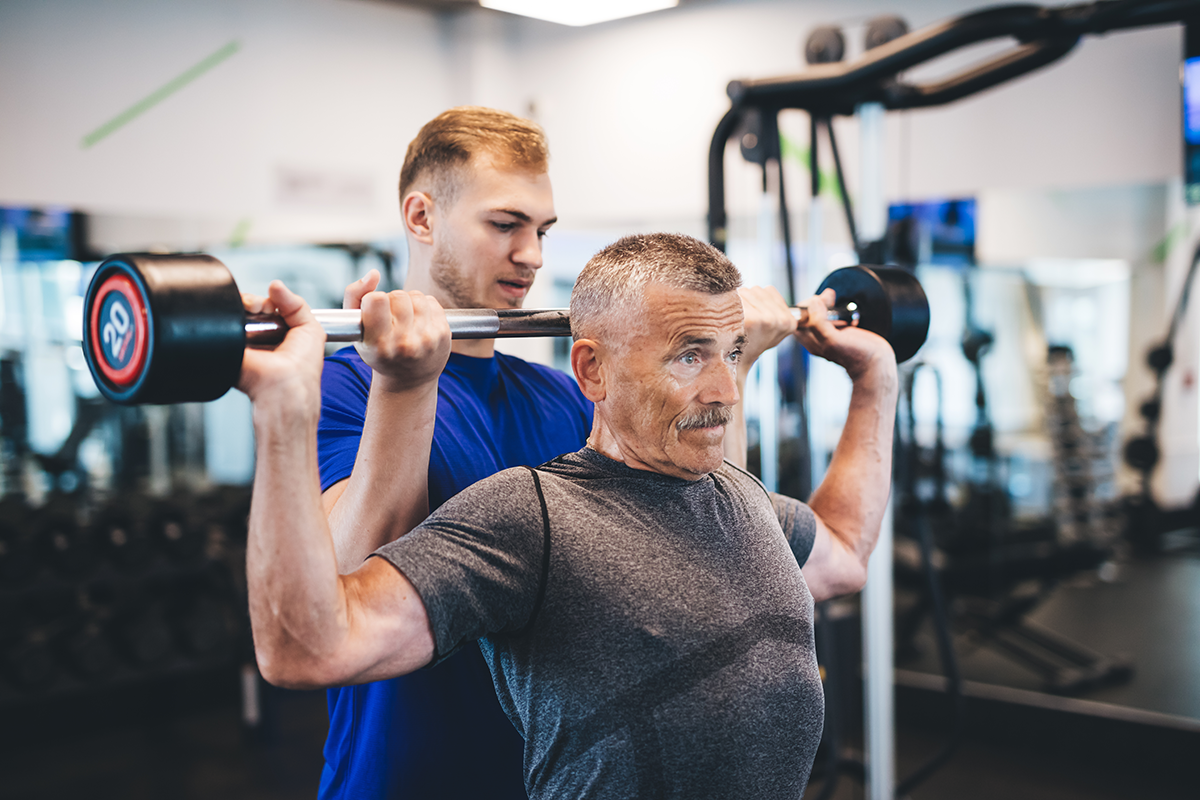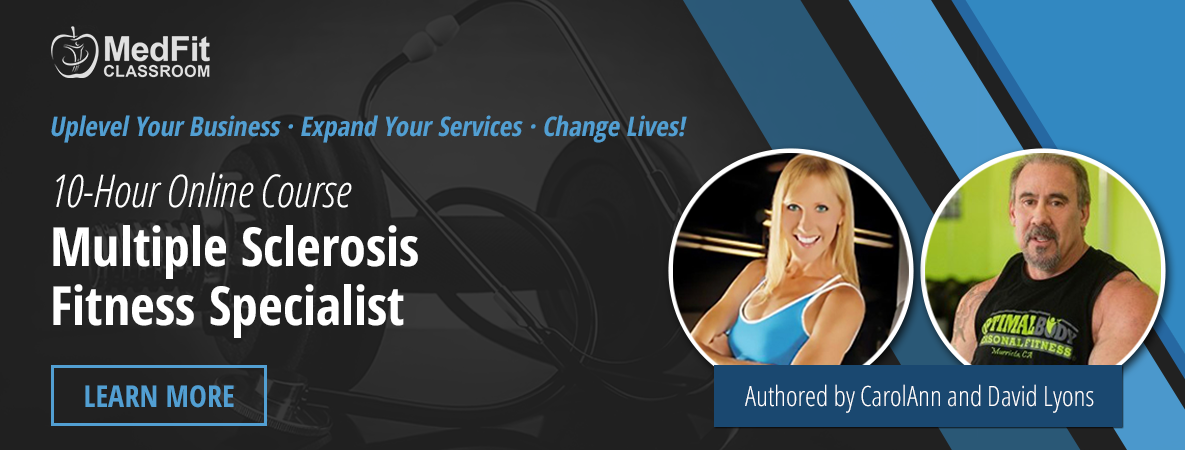If you’re trying to build muscle, strength training is the best way to do it. Strength training damages the muscles, which causes them to repair and grow. The result is bigger, stronger muscles. Bigger, stronger muscles to someone like me with multiple sclerosis (MS) means the strength to move those muscles once we create the brain to muscle reconnection.
However, optimal muscle growth goes beyond your actual workout. It also relies on post-workout nutrition. Your muscles need enough protein and carbohydrates to effectively recover.
Many people claim you should eat a post-workout meal during the “anabolic window.” This term refers to the short time after training when your muscles are repairing and recovering. It’s also called the metabolic window or protein window. You will hear me say this when I tell you what to eat for maximum results.

Allegedly, the anabolic window lasts 30 minutes. If you want maximum results, you should consume protein and carbs within this time frame. Eating a meal after these 30 minutes is supposedly less helpful. I believe that window is 60 minutes as do many fitness experts.
Many people use this concept to practice precise nutrient timing. As it turns out, there’s little scientific proof to back the strategy. Read on to learn about the anabolic window theory and why it doesn’t exist.
Anabolic state theory
The anabolic window theory is based on your body’s anabolic response.
Anabolism is when small molecules grow into bigger, complex molecules. These molecules form into new cells and tissues, including muscle. It’s the opposite of catabolism, or when larger molecules break down.
After strength training, your body is in an anabolic state. This involves a range of cellular processes that facilitate muscle repair and growth. These processes are fueled by protein and carbs.
According to the anabolic state theory, this anabolic response is a limited time frame of only 30 minutes. Again, I say it’s 60 minutes. It also claims that immediately eating protein and carbs is critical for:
- Increasing protein synthesis
- Reducing muscle protein breakdown
- Replenishing muscle glycogen
There’s some merit to these claims. According to a 2018 study, muscle protein breakdown (MPB) increases in response to strength training. Muscle protein synthesis (MPS) also increases, but to a greater extent. The balance between MPB and MPS determines muscle growth. This balance is called net muscle protein balance (NBAL).
Post-workout nutrition can affect these processes. Protein intake limits MPB and supports MPS. Carb intake also inhibits MPB and aids glycogen resynthesis. Glycogen provides energy for your muscles.
After exercising, it might seem logical to immediately eat protein and carbs to suppress MPB. It’s also assumed that this will increase muscle mass by increasing NBAL. That’s where the theory oversimplifies the science.
Changes in muscle size depend on myofibrillar proteins. To increase muscle mass, the suppression of MPB would need to solely target these proteins.
However, MPB affects many types of proteins. This includes muscle proteins that rapidly turn over or have been damaged. Degrading these proteins may be essential to remodel muscle. This suggests that trying to limit MPB through post-workout nutrition might actually hinder proper recovery.
Plus, aside from nutrition, there are many factors that affect recovery and growth, including age, hormones, and training routine.
There also isn’t hard evidence that says the anabolic window is only 30 minutes long. It’s not clear where the suggested time frame came from. But with my 40 plus years in fitness combined with the knowledge of many other fitness “gurus” we all believe that period of time is more in the 60 minute range.

What the science says
The concept of a narrow anabolic window is a widespread belief. Research shows that it’s not as short or as simple as it seems.
A small 2017 study found that pre- and post-workout protein intake both produce similar muscle adaptions. This suggests that pre-workout protein could suffice and immediate post-workout intake isn’t much better. It also proposes that the “window of opportunity” for protein is quite wide.
An older 2007 study had comparable results. Participants consumed whey just before exercise or 1 hour after. Both groups experienced similar changes in muscle protein synthesis. Additionally, a 2013 meta-analysis of 43 studies didn’t find a strong link between immediate protein intake and muscle growth or strength.
The role of immediate protein intake on muscle protein breakdown may also be exaggerated.
While it’s true that muscle breakdown increases after training, a 2009 article says this effect is brief.
A 2010 study examined the post-workout anabolic response that happens after protein intake. Researchers found that the response is mainly due to protein synthesis rather than protein breakdown. This proposes that immediately eating to reduce muscle breakdown may not be necessary.
The exception is if you worked out while fasting. According to an older 2003 study, fasted exercise significantly increases post-training muscle breakdown. So, if you don’t eat before training, it’s important to eat right after.
Finally, a 1997 study found that delaying post-workout carb intake by 2 hours didn’t affect muscle glycogen resynthesis. The levels of glycogen remained the same 8 and 24 hours later, suggesting later carb intake may still be beneficial.
How to try anabolic exercise
By following my OptimalBody Training Program for MS, you are in an anabolic exercise program which has the following rules:
- Strength train. Strength training, or resistance training, promotes anabolism and muscle growth. You can achieve this by lifting weights, using resistance bands or doing bodyweight exercises. Your body only knows that resistance is being placed on the muscles and not which type of resistance you are using. Using resistance bands offers many conveniences such as easiness of changing resistance; mobility of the bands so they can be used anywhere; and a large variety in exercises.
- Consume enough carbs and protein. Generally, it’s recommended to eat carbs and protein at a 3 to 1 or 4 to 1 ratio.
- Eat within 30 – 60 minutes after a workout. The purported anabolic window lasts 30 minutes after your workout. You can save time by preparing your meal before exercising.
With all exercise routines, be sure to stay hydrated. Drinking water before, during, and after exercise is important, whether you’re trying anabolic exercise or not.
Are you a personal trainer wanting to expand your services? Check out MedFit Classroom’s online course, Multiple Sclerosis Fitness Specialist, co-authored by David Lyons.
David Lyons, BS, CPT, is the founder of the MS Bodybuilding Challenge and co-founder of the MS Fitness Challenge with wife Kendra. He has dedicated his life to helping people with MS understand and be educated on the importance of fitness in their lives. He is an author and sought after motivational speaker, dedicated to helping others by sharing the lessons gained from his life experience. His most recent book, Everyday Health & Fitness with Multiple Sclerosis was a #1 New Release on Amazon at its release. He is the 2013 recipient of the Health Advocate of the Year Award; in 2015, he received the first ever Health Advocate Lifetime Achievement Award, and the Lifetime Fitness Inspiration Award in Feb 2016. In 2017, David received the Special Recognition Award from the National Fitness Hall of Fame.

